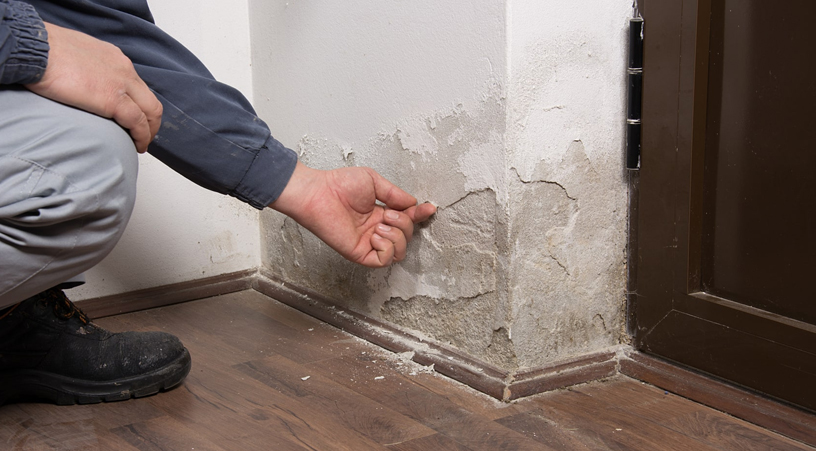- Office no 138,Bizz Bay, NIBM, Pune 411048
- info@smsenterprises.com
- +918983791910
Rising Dampness

Rising Dampness
Rising dampness is a common issue in buildings caused by the upward movement of groundwater through porous building materials like bricks, mortar, or concrete. It occurs when moisture from the ground is drawn up into walls or structures via capillary action, leading to visible signs of dampness and potential structural damage if left unaddressed.
To combat rising dampness, various waterproofing methods can be employed:
-
Damp-Proof Course (DPC): Installing or repairing a damp-proof course is a primary solution to prevent rising damp. A DPC is a physical barrier usually made of materials like bitumen, plastic sheets, or specialized membranes that are inserted horizontally into walls at a certain height above ground level during construction or renovation. This barrier prevents moisture from ascending further up the walls.
-
Chemical Damp-Proofing:In existing structures with compromised or absent DPCs, a chemical damp-proofing treatment can be applied. This involves injecting chemical solutions into the walls at regular intervals, creating a moisture-resistant barrier that halts the upward movement of water.
-
Waterproofing Coatings or Membranes:Applying waterproofing coatings or membranes to affected walls provides an additional layer of protection against rising dampness. These coatings, such as cementitious waterproofing compounds or liquid-applied membranes, form a durable barrier that prevents moisture penetration.
-
Improved Drainage and Ventilation:Addressing external factors that contribute to rising dampness is essential. Improving drainage systems around the building, ensuring proper ventilation to allow moisture to escape, and maintaining adequate ground slope away from the structure can help mitigate the problem.
-
Professional Assessment and Remediation:Engaging waterproofing experts or building professionals is crucial for an accurate assessment of rising damp issues. They can identify the root causes, extent of damage, and recommend appropriate remedial measures, such as repair or replacement of affected materials and application of suitable waterproofing solutions.
